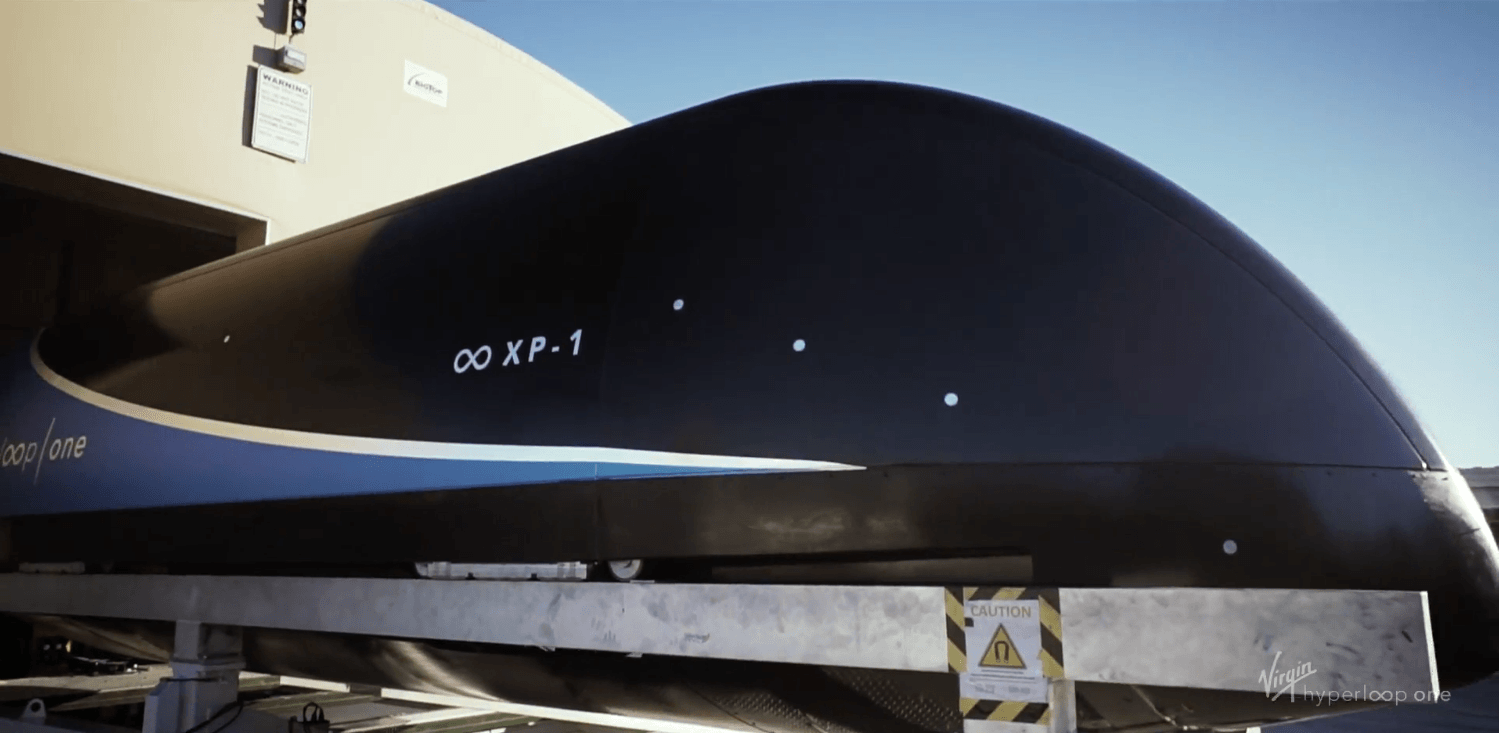The study into the feasibility of the electromagnet-propelled train also found infrastructure costs to be 40% lower than high speed rail projects such as HS2.

Virgin Hyperloop One has been testing the concept in the Californian desert (Credit: Virgin Hyperloop One)
The cost of the futuristic Hyperloop One transport system could be more viable than other high-speed options, according to an independent study as the first project nears completion.
The report, published by global infrastructure solutions company Black & Veatch, assessed the sustainability, and financial feasibility of implementing the transportation project along the I-70 corridor in Missouri.
It found that up to $410m (£317m) per year could be saved as a result of the faster travel speeds and less time spent on the road as well as a $91m (£70m) windfall from a reduction in road accidents.
CEO of Virgin Hyperloop One Rob Lloyd said: “A feasibility study of this depth represents the first phase of actualization of a full-scale commercial Hyperloop system, both for passengers and cargo in the United States.
“We are especially proud that Missouri, with its iconic status in the history of U.S. transportation as the birthplace of the highway system, could be the keystone of a nation-wide network.
“The resulting socio-economic benefits will have enormous regional and national impact.”  Virgin Hyperloop One’s test tube which will carry the passenger pods from point A to B (Credit: Virgin).
Virgin Hyperloop One’s test tube which will carry the passenger pods from point A to B (Credit: Virgin).
The potential of the high-speed Hyperloop system could cut travel time between Kansas City and St. Louis from 3 ½ hours to 28 minutes while a trip from St.Louis to Columbia could be as little as 15 minutes – down from 2 hours.
Analysts at Black & Veatch also found that the infrastructure costs are around 40% lower than those seen in high speed rail projects around the world.
The research firm anticipated these savings would be passed onto consumers, making the cost of travel from St. Louis to Kansas City via Hyperloop One cheaper than the current cost of driving based on fuel price alone.
How does Hyperloop One work?
The Hyperloop system works by propelling transportation pods through a tunnel linking the starting point and the destination.
Electromagnets are then used to propel the pods around the near-frictionless tube at speeds of up to 670mph.
The concept for the technology was first put forward in a white paper by Tesla fouder Elon Musk. Virgin founder Richard Branson then put the project into development with Hyperloop One which is currently being tested in Nevada.
Musk recently tweeted an announcement that the first Hyperloop tunnel was “almost done” and revealed that free rides would be made available to the public the day after the grand opening on 10 December.


